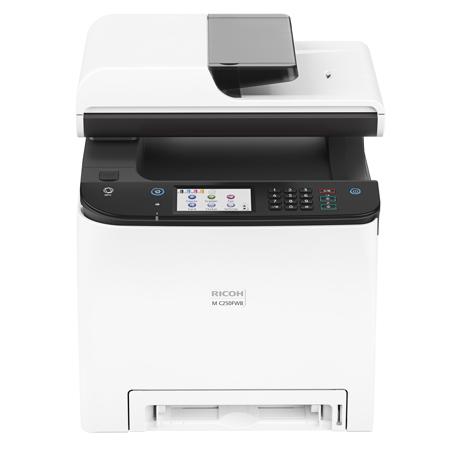5 Simple Techniques For Wifi Printer</h1> <p>Memory requirements boost with the square of the dots per inch, so 600 dpi requires a minimum of 4 megabytes for black and white, and also 16 megabytes for shade (still at 600 dpi). For totally visual output ma
Memory needs boost with the square of the dots per inch, so 600 dpi calls for a minimum of 4 megabytes for grayscale, and 16 megabytes for color (still at 600 dpi). For totally visual outcome making use of a http://www.bbc.co.uk/search?q=office automation page summary language, a minimum of 1 megabyte of memory is required to store an entire monochrome letter/A4 sized page of dots at 300 dpi.
A regular 8.5 × 11 sheet of paper has 0.25-inch (6.4 mm) margins, decreasing the printable area to 8.0 by 10.5 inches (200 mm × 270 mm), or 84 square inches. 84 sq/in × 90,000 dots per sq/in = 7,560,000 dots. 1 megabyte = 1,048,576 bytes, or 8,388,608 little bits, which is just large sufficient to hold the whole web page at 300 dpi, leaving concerning 100 kilobytes to spare for usage by the raster photo processor.
During the 1980s, memory chips were still extremely pricey, which is why entry-level printer because era always included four-digit suggested list prices in United States dollars. Memory prices later on dove, as well as 1200 dpi printers have actually been commonly offered in the customer market since 2008. 2400 dpi electrophotographic printing plate manufacturers, basically printer that print on plastic sheets, are additionally readily available.
An AC predisposition voltage is related to the key cost roller to remove any kind of residual fees left by previous photos. The roller will certainly also use a DC prejudice on the drum surface to make certain a consistent adverse capacity. Countless patents [] define the photosensitive drum coating as a silicon sandwich https://printerline.co.il/ כבל רשת 10 מטר with a photocharging layer, a fee leakage barrier layer, along with a surface layer.
Laser light selectively reduces the effects of the negative charge on the photoreceptive drum, to create an electrostatic image Laser device from a Dell P1500. The white hexagon is the rotating scanner mirror. A printer makes use of a laser because lasers have the ability to create highly focused, exact, and also extreme beams of light, especially over the brief ranges inside of a printer.
The drum remains to revolve during the sweep, as well as the angle of sweep is angled very somewhat to make up for this activity. The stream of rasterized data held in the printer's memory swiftly transforms the laser on and off as it sweeps. The laser light beam counteracts (or turns around) the cost externally of the drum, leaving a static electric adverse image on the drum's surface area which will certainly ward off the adversely charged toner particles.
Scanners for Dummies
Some non-laser printers (LED printers) make use of an array of light-emitting diodes spanning the width of the page to produce a picture, instead of making use of a laser. "Revealing" is also referred to as "creating" in some documentation. As the drums revolve, toner is constantly used in a 15-micron- thick layer to the developer roll.
Toner contains fine bits of completely dry plastic powder blended with carbon black or tinting agents. The printer toner particles are given an adverse charge inside the printer toner cartridge, and also as they arise onto the designer drum they are electrostatically brought in to the photoreceptor's unrealized image (the locations on the surface area of the drum which had actually been struck by the laser).

A sheet of paper is then rolled under the photoreceptor drum, which has been covered with a pattern of toner fragments in the precise locations where the laser struck it minutes before. The toner fragments have an extremely weak tourist attraction to both the drum and also the paper, however the bond to the drum is weak and the particles transfer once more, this moment from the drum's surface to the paper's surface.
Printer toner is fused onto paper with warmth and pressure The paper travels through rollers in the fuser assembly, where temperatures approximately 427 ° C (801 ° F) as well as stress are utilized to permanently bond the toner to the paper. One roller is generally a hollow tube (warmth roller) as well as the other is a rubber backed roller (stress roller).

For correct bonding of the toner, the fuser roller must be uniformly hot. Some printers utilize an extremely thin flexible steel foil roller, so there is much less thermal mass to be heated up and the fuser can faster reach running temperature. If paper moves with the fuser much more slowly, there is more roller contact time for the printer toner to melt, as well as the fuser can operate at a lower temperature level.
Zoom of shade printer output, revealing specific printer toner fragments making up 4 dots of a photo with a blue background As the drum completes a change, it is exposed to an electrically neutral soft plastic blade which cleans any remaining toner from the photoreceptor drum as well as deposits it into a waste tank.